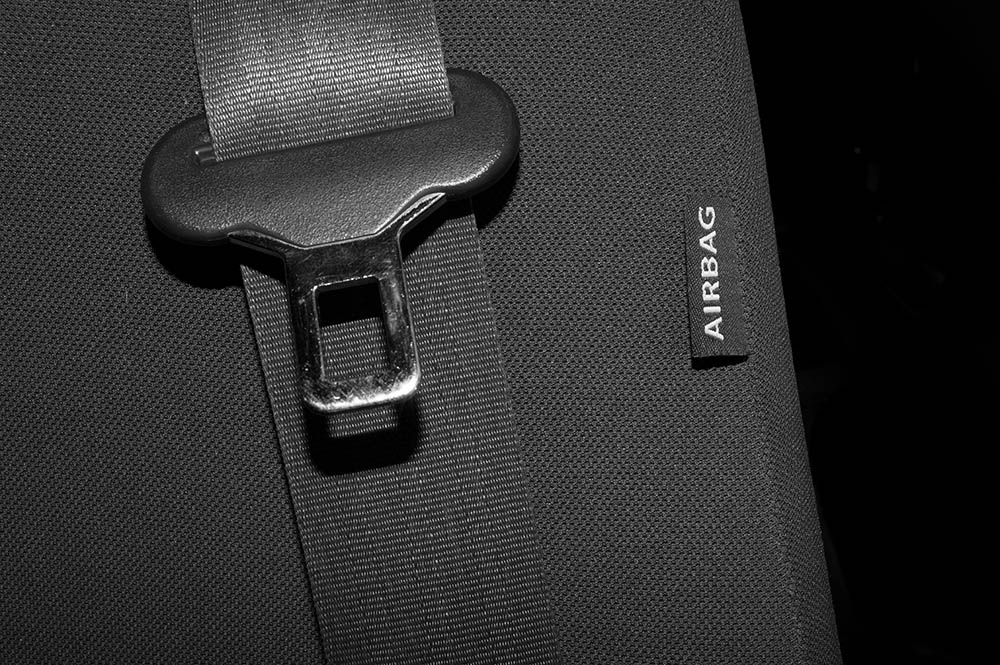What Is a Seat Belt Made Of? Types, Facts & FAQ
-
Shea Cummings
- Last updated:

Vehicles today are equipped with incredible safety technologies such as blind-spot detection or automatic braking. However, one technology that’s been used for many years to save lives is the seat belt. Countries around the world adopted mandatory laws at different times, but the early 60s is when it started becoming required.
Over the years, materials used to manufacture seat belts have changed. Nylon used to be a fairly popular material, but because it tends to stretch a lot, it’s lost much of its popularity. There is still no standard that dictates what material is used. But 100% polyester is one of the most common materials used in making most seat belts.
 How are Seat Belts Made?
How are Seat Belts Made?

A seat belt is made by weaving small strands of yarn together tightly in a webbed pattern. Typically, the pattern will be an eight-shaft herringbone twill. Variations of satin weave are also reasonably common. And with the technological advances, this is done on special looms that weave up to 3,000 picks every minute.
Different Types of Seat Belts
There are several types of seat belts, and each of them does its job differently. Some are more effective than others at preventing injury. Let’s take a look at them:
- Two point: Also known as lap belts, these were the most common safety belts before laws were passed requiring other belts in various vehicles. If you travel by plane or on some buses, you’ll still likely use a lap belt.
- Sash: Instead of going over your lap, this seat belt goes from one shoulder down to the opposite hip.
- Three-point: This will be the seat belt you’re most familiar with in most places. It’s a combination of a lap belt and a sash belt. The strap goes across your hips and then extends from your hip across the sternum to the opposite shoulder.
- Multiple point: After the common three-point seat belt, there are four, five, six, and even seven-point seat belts. Each has different applications, such as race cars, fighter jets, or infant car seats. Essentially each has additional points of security to prevent injury in the event of an accident.
How Does a Seat Belt Work?
Each type of seat belt performs its job a little differently. But at its core, each belt is designed to distribute weight as evenly as possible in the event of a collision. In addition, they are meant to prevent the occupant from being ejected from the vehicle.
 Final Thoughts
Final Thoughts
It’s unlikely that you live somewhere where seat belts aren’t required. However, many people choose not to wear them, using excuses such as “they’re uncomfortable” or “they’re good drivers and won’t get in an accident.”
Unfortunately, accidents happen, and being injured is much more uncomfortable than wearing a seat belt. Other people argue that a seat belt does more damage in a crash. And while these claims aren’t totally unfounded, statistics show a much higher chance that they will save a life.
So, buckle up. And if you’re curious, take a look at your seatbelt next time you get in your car and see how intricately woven it is.
- See Also: What Is a Seatbelt Pretensioner?
Featured Image Credit: Tasoph, Shutterstock
Contents
 How are Seat Belts Made?
How are Seat Belts Made?